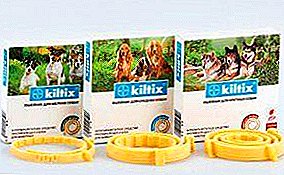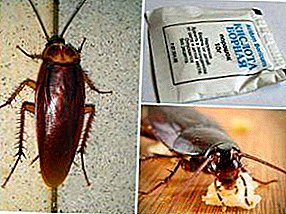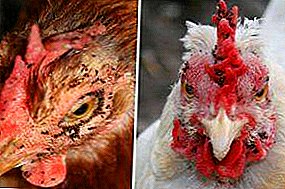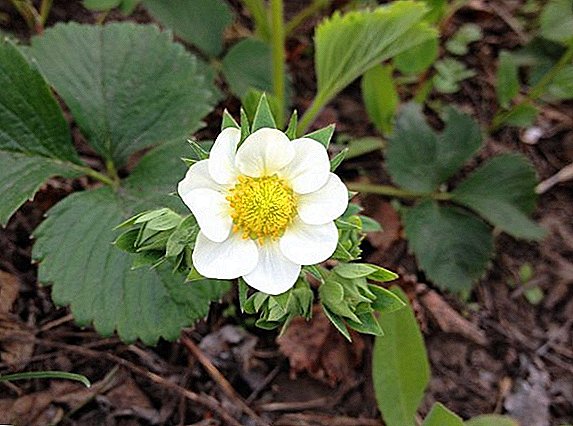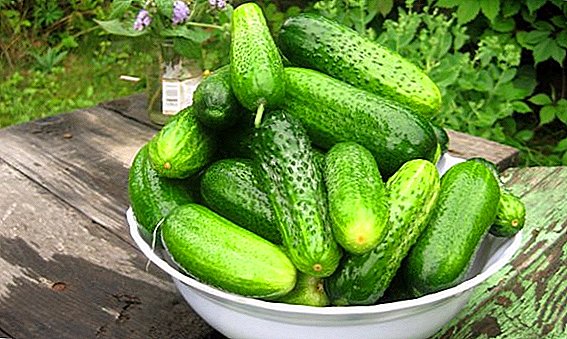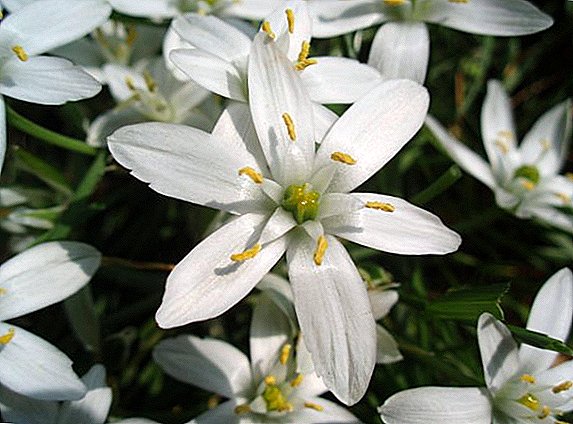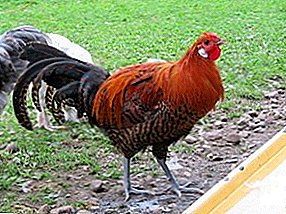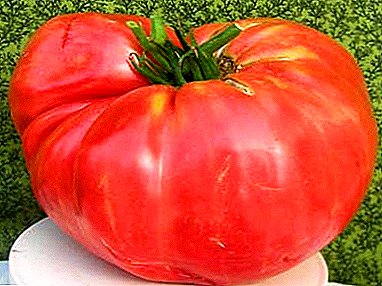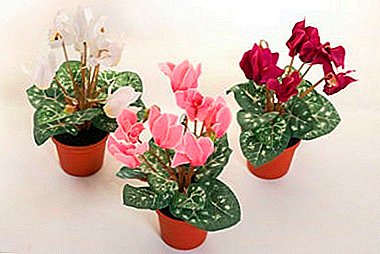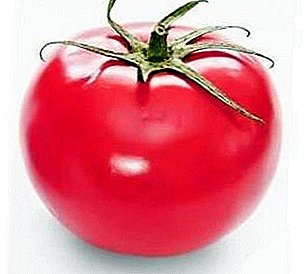
Gardeners who prefer undemanding tomatoes who calmly tolerate the vagaries of the weather will be favored by the Wind Rose variety, specially bred for regions with an unpredictable climate.
Compact bushes are remarkable for their durability, they are not afraid of short-term frosts, heat, lack of water or excessive moisture. A wonderful bonus is high yield.
Read in our article a detailed description of the wind rose variety, get acquainted with its characteristics and growing features, susceptibility to pests or diseases.
Tomato Windrose: variety description
 Variety of Russian breeding, recommended for the northern regions. Cultivation is possible in greenhouses, in greenhouses, under film and open ground. The harvest is well stored and transported. Tomatoes harvested in the technical ripeness phase can ripen at room temperature.
Variety of Russian breeding, recommended for the northern regions. Cultivation is possible in greenhouses, in greenhouses, under film and open ground. The harvest is well stored and transported. Tomatoes harvested in the technical ripeness phase can ripen at room temperature.
Rose of Winds - an early ripe high-yielding grade. Bush determinant, standard. About indeterminantny grades read here. The leaves are dark green, medium size, slightly corrugated, greens plentiful. Productivity is excellent, from 1 square. m planting can be collected up to 7 kg of ripe tomatoes. Fruit ripening is friendly, from the end of July to the beginning of September.
Yield varieties can be compared with others:
| Grade name | Yield | Rose of Wind | 7 kg per square meter |
| American ribbed | 5.5 kg per plant |
| Sweet bunch | 2.5-3.5 kg from a bush |
| Buyan | 9 kg from a bush |
| Doll | 8-9 kg per square meter |
| Andromeda | 12-55 kg per square meter |
| Lady shedi | 7.5 kg per square meter |
| Banana red | 3 kg from a bush |
| Golden anniversary | 15-20 kg per square meter |
Among the main advantages of the variety:
- high taste of fruits;
- tomatoes are well kept;
- compact bushes that do not require formation;
- tolerance to temperature fluctuations;
- resistance to major diseases.
There are practically no flaws in the variety.
Specifications
The main characteristics of the variety are:
- Fruits are large, even, rounded. Weight 120-130 grams.
- The skin is moderately dense, glossy.
- During ripening, the color changes from green to warm pink.
- The flesh is juicy, not watery, pleasant sweetish taste.
- Seed chambers a little, the high content of sugars, amino acids and beta-carotene allows us to recommend fruits for baby and dietary food.
Compare this figure with other varieties can be in the table:
| Grade name | Fruit weight |
| Rose of Wind | 120-130 grams |
| Verlioka | 80-100 grams |
| Fatima | 300-400 grams |
| Yamal | 110-115 grams |
| Red Arrow | 70-130 grams |
| Crystal | 30-140 grams |
| Raspberry jingle | 150 grams |
| Cranberries in sugar | 15 grams |
| Valentine | 80-90 grams |
| Samara | 85-100 grams |
A variety of salad, fruits are used to prepare snacks, soups, hot dishes, sauces and mashed potatoes. Ripe fruit produces a delicious thick juice of the original pink color. Canning is possible.
 Read also on our website: Subtleties of technologies for the cultivation of early varieties of tomatoes. How to grow delicious tomatoes all year round in heated greenhouses?
Read also on our website: Subtleties of technologies for the cultivation of early varieties of tomatoes. How to grow delicious tomatoes all year round in heated greenhouses?How to get a high yield of tomatoes in the open field? Which varieties have high yields and good immunity, resistant to late blight?
A photo
Photo tomato "Wind Rose":



Features of growing
 Like other early ripe tomatoes, Wind Rose is sown on seedlings in March and early April. Tomatoes need light nourishing soil consisting of garden soil and peat.
Like other early ripe tomatoes, Wind Rose is sown on seedlings in March and early April. Tomatoes need light nourishing soil consisting of garden soil and peat.
Before planting, seed is soaked in a growth promoter. For germination the temperature is about 25 degrees. After the emergence of shoots container with seedlings exposed to bright light. Picks are carried out in the phase of the formation of real leaves, then the seedlings are fed with a solution of a complete complex fertilizer. Seedlings are planted in a permanent place in early June.
Reproduction is possible in a seedless way. In the film shelter the earth is loosened, small holes are spilled with hot water. After cooling, the seeds are laid in them and sprinkled with a layer of peat. The distance between the bushes is 35-40 mi, the spacing is at least 60 cm.
Grown up plants are watered abundantly, but not too often, 1 time in 6-7 days. Tomatoes tolerate a small drought or waterlogging, but compliance with the irrigation regime provides the best yield. It is not necessary to form plants (pasynkovanie is not required), but too heavy branches need to be tied up. Mulching will save from weeds.
Every 2 weeks the bushes are fed with a liquid complex fertilizer with a predominance of potassium and phosphorus. Sometimes you can indulge tomatoes with organic matter: bird droppings or divorced mullein. Also as feedings you can use: yeast, iodine, ash, hydrogen peroxide, ammonia, boric acid.
 Read also on our website: How to prepare the soil in the greenhouse for planting in the spring? What types of soil for tomatoes exist? What soil composition is most suitable for tomatoes in greenhouses?
Read also on our website: How to prepare the soil in the greenhouse for planting in the spring? What types of soil for tomatoes exist? What soil composition is most suitable for tomatoes in greenhouses?And also, which diseases most often affect greenhouse tomatoes and what measures can be taken to combat them?
Pests and diseases
The variety is resistant to major diseases. However, trouble can happen to him. Detect problems will help regular inspection of landings. Having noticed the first signs of late blight, it is necessary to immediately tear off the affected leaves and fruits and treat the plants with copper preparations. Read more about how to protect plants from phytophthora here. Soft brown spots on the stalks indicate a lack of calcium. The problem will remove the feeding of calcium nitrate.
Information about such diseases as Alternaria, Fusarium, Verticillium wilt and fungicides in combating them may also be useful.
Pests can also be caused by insect pests. For example, aphid, Colorado potato beetle, spider mite greatly harm the juicy greens of tomatoes. Get rid of the aphids will help warm soapy water, which washed the stems and leaves.
You can scare away naked slugs by regular spraying with an aqueous solution of ammonia. Insecticides protect against thrips and spider mites, but they can only be used before fruiting.
Windrose - a variety that deserves close attention. It will suit even those who have already planted several types of tomatoes in the greenhouse. Severe Rose does not claim shelter, she feels good in the open field, does not get sick and brings a bountiful harvest.
In the table below you will find useful links about tomato varieties with different ripening periods:
| Middle late | Medium early | Superearly |
| Volgogradsky 5 95 | Pink Bush F1 | Labrador |
| Krasnobay F1 | Flamingo | Leopold |
| Honey salute | Mystery of nature | Schelkovsky early |
| De Barao Red | New königsberg | President 2 |
| De Barao Orange | King of Giants | Liana pink |
| De barao black | Openwork | Locomotive |
| Miracle of the market | Chio Chio San | Sanka |


